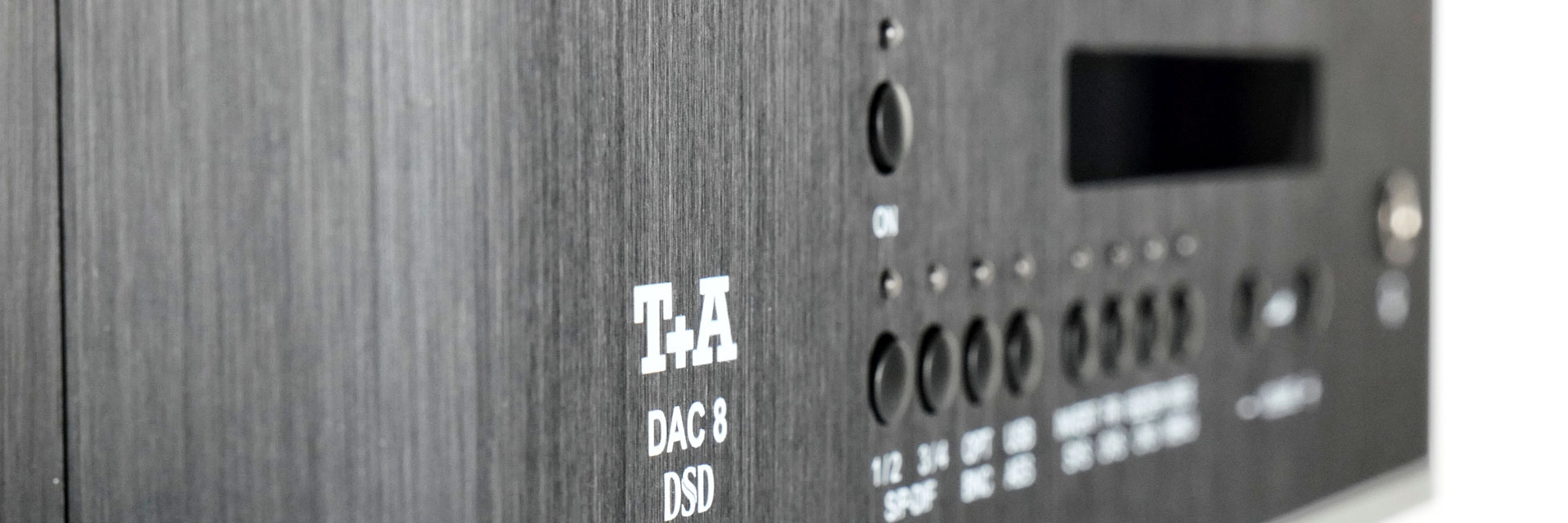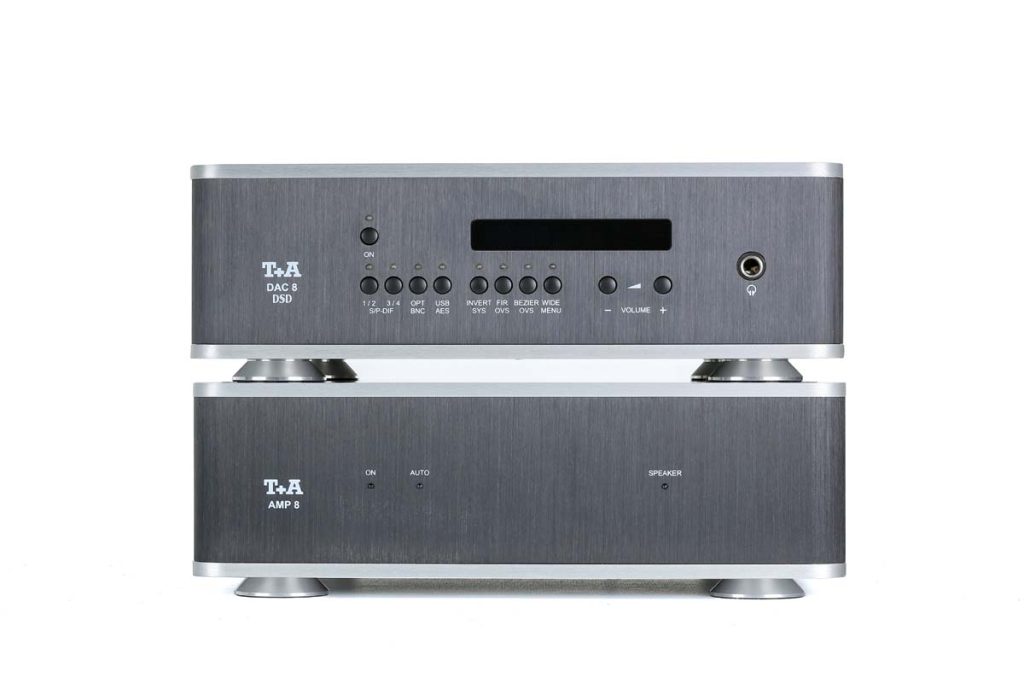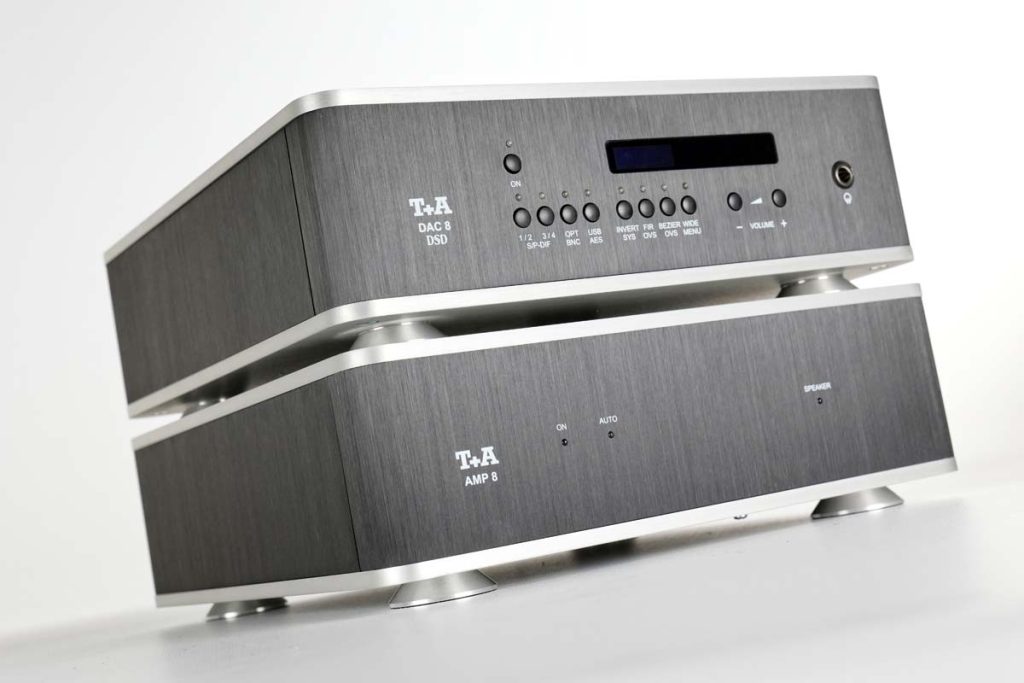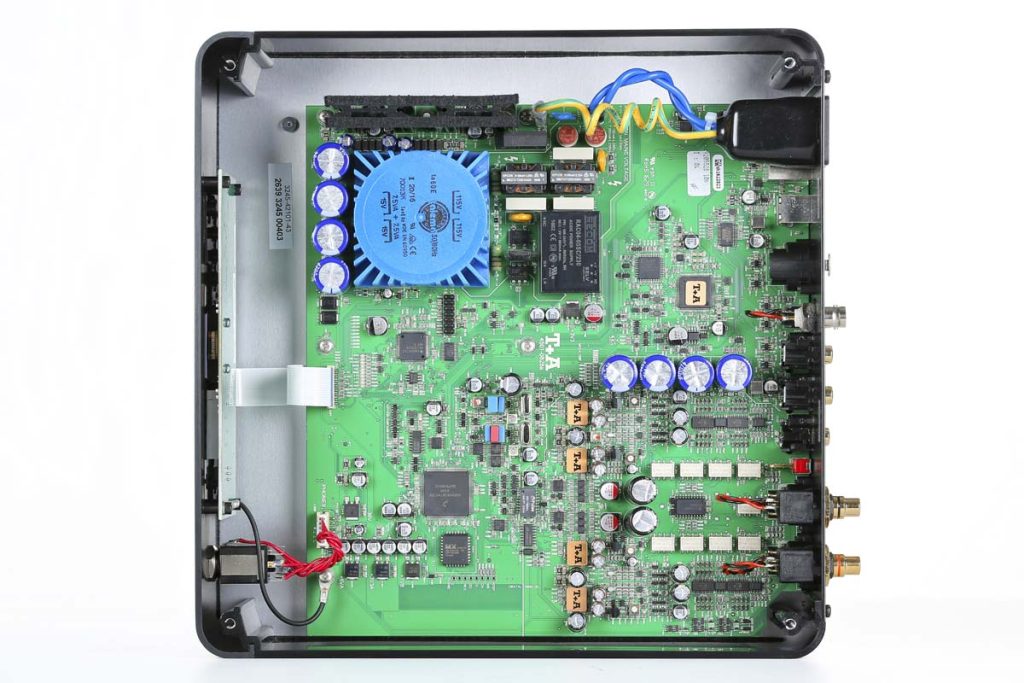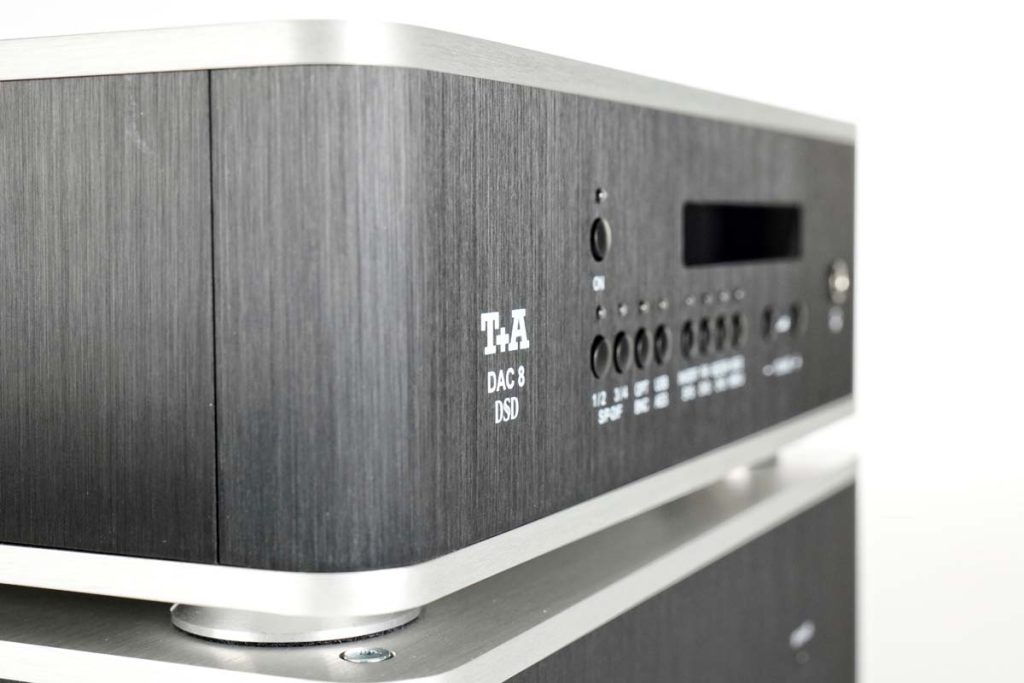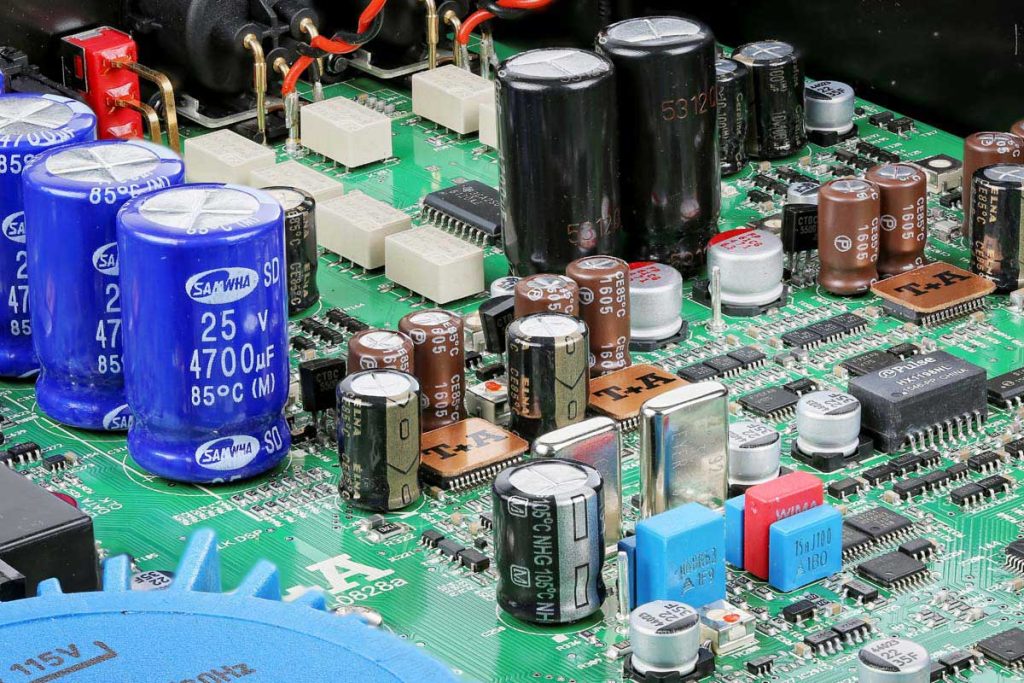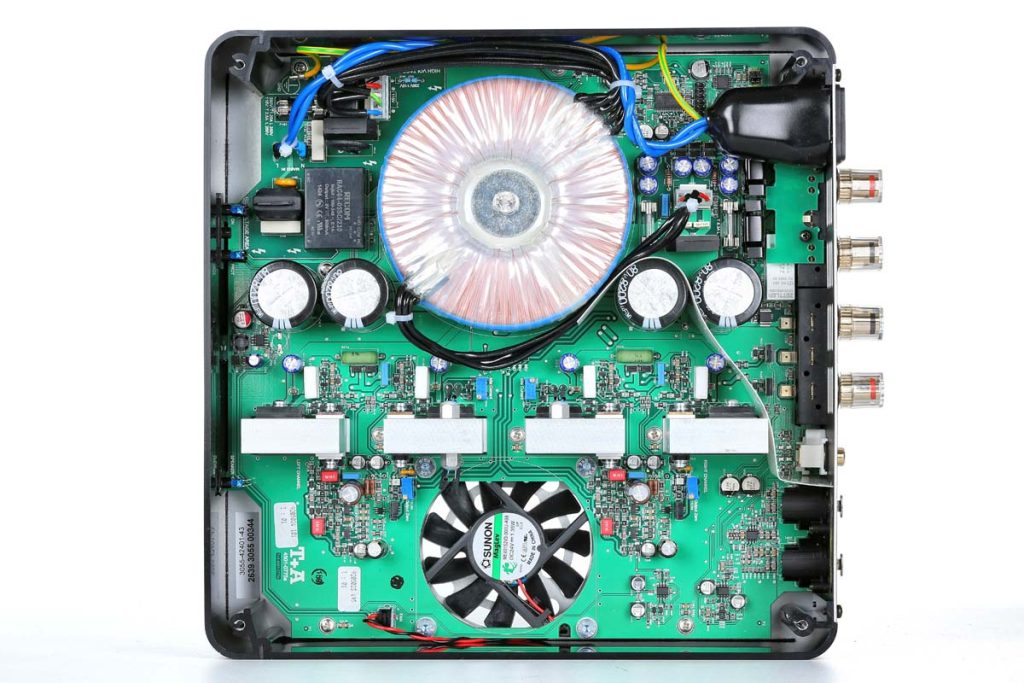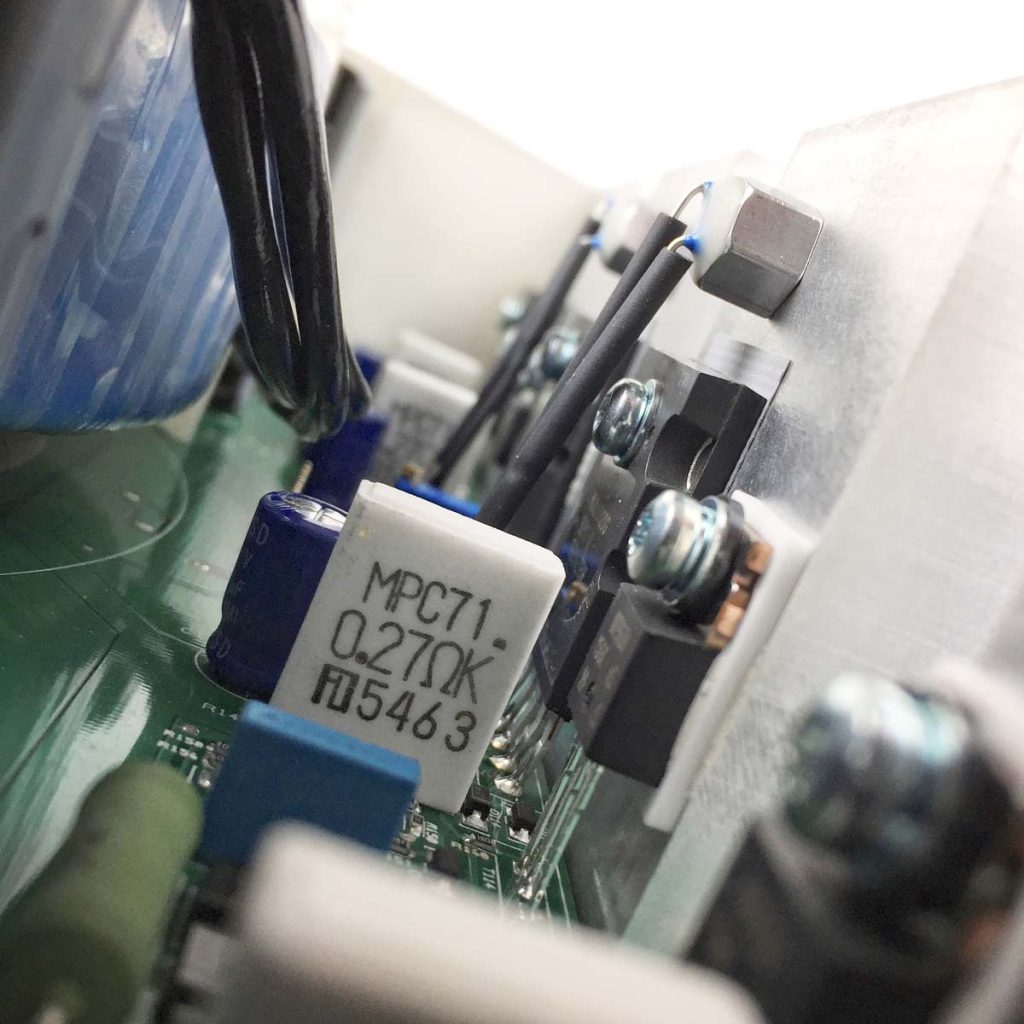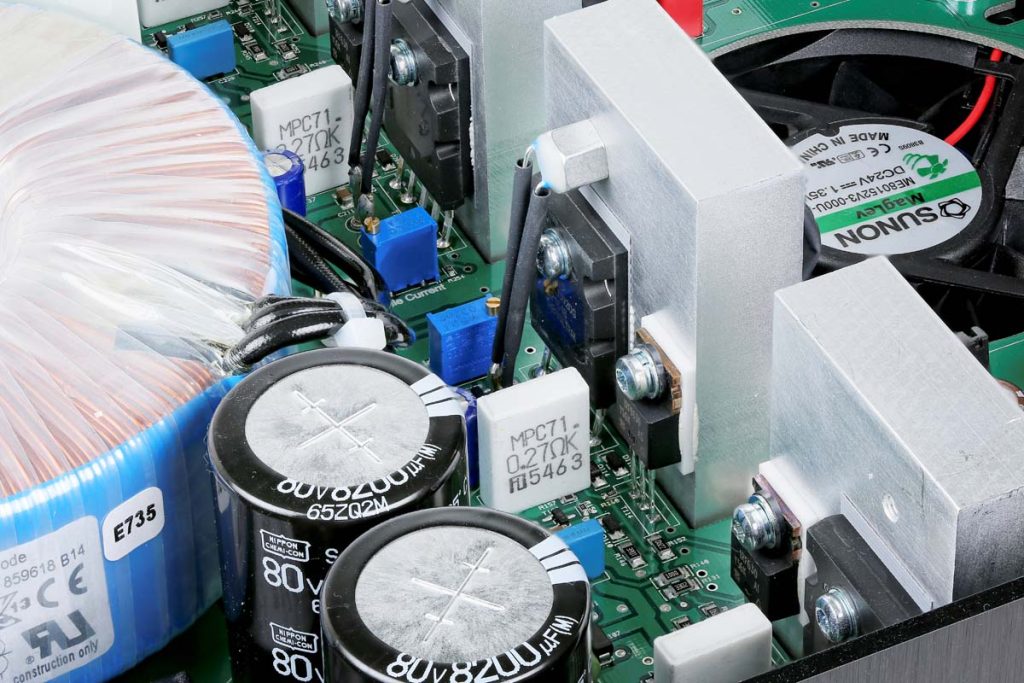The (Not So) Subtle Difference
Is there really no audible difference among converters? My advice is to listen to the T+A DAC 8 DSD and let it change your mind!
One of the many analog hi-fi world’s rumors that has taken root as a “truth” is that consumer electronics have really reached their pinnacle in the last few decades. In the digital world, people also say there is hardly any difference between one generation of converters and the next or one current model and its competitor.
Maybe a look at professional equipment that has to be worth the investment will help. No studio would ever purchase a converter or preamplifier just to bolster their image. New purchases need to give studios a competitive edge by ensuring improved sound quality and in this way pay for themselves. Admittedly, that doesn’t apply to soloists’ microphones. Many singers will wait for a trendy tripod model to come out (and may even hang it from above as well, which is completely crazy for transistor microphones!) and often feel less comfortable with a tonally superior underdog. And it shows in their performance. OK, so …
Back to converters and preamps. Both categories have established shining stars, and many new models have come and gone because they were just old wine in new bottles and not really worth the investment. I was initially nervous, to say the least, when I checked out the new interfaces from Merging a while ago. But when I realized the huge progress they had made, I simply had to bag myself a pricey Merging. Since this small Swiss company is currently struggling to keep up with production, it seems that many studios feel the same way. Although we’re talking about seemingly “finished” product groups, so much has obviously been done that real arguments in favor of making a new purchase now exist that go beyond the simple mindset of “I want it so I’ll buy it” or “I think this one has more tonal light and shade.”
After my experience with Merging during recordings, I recently had an opportunity to witness similar progress in the mastering studio. For mastering a recording, I swapped a well-respected mastering DAC for the T+A DAC 8 DSD to try it out for the first time. The device I had been using before really shows the competition how it’s done. The T+A, though, takes things to a whole new level, and it’s actually very easy to explain how: The tiniest of cutting errors, poorly built reverberant rooms and brittle fades are all apparent without having to crank up the volume or resort to using headphones (which is what you have to do with most other devices). Congratulations are in order. My curiosity piqued, the DAC 8 DSD found its way into my home stereo system.
The current model is an evolved version of the wellknown DAC 8: In updating it, T+A head developer, Lothar Wiemann, took the thorough approach he is known for and didn’t just give it a pointless facelift. Instead, he’s of course made sure you’re getting something worthy of the extra €900 price tag. Like the new DSD function: In addition to PCM data, the DAC 8 can also now read DSD material up to an impressive 24.6 MHz — and much more “cleanly” than the competition. Usually, 1-bit DSD material is internally converted into multibit data to make it easier to access the datastream; this approach makes it possible to implement volume controls and digital equalizers. But for Wiemann, that wasn’t puristic enough — or, stated more precisely, “clean” enough. So T+A developed their own DSD converters that work in 1-bit mode across all digital operations. Things are then only controlled afterward, in the analog world. To ensure no converter artifacts can sully the analog signal, small SMD components are used at the end. I can best describe these parts as mini transformers with galvanic isolation and add: What T+A has managed to do is truly remarkable!
Not a lot has changed on the PCM side. Eight 32-bit Burr-Brown sigma delta converters are still used. Rather cumbersomely named Double Differential Quadruple Converter, the package uses its differential circuitry to shift any focus as far away as possible from miscalculations and simple background noise. To ensure jitter also doesn’t jeopardize the impressive sound, two-stage retiming is applied to the incoming signal, which is further filtered if necessary.
It would now be my pleasure to essentially advise all audiophiles who find the PCM format enough to get a DAC 8 from the previous series (without DSD). It’s definitely much cheaper. But it’s not as easy as all that: In addition to the DSD conversion, T+A has also tricked out the new model by giving it the volume control from the major HV series. This means added value you simply cannot ignore has been created on the analog level. Said control is completely analog in terms of the signal: Here is where a galvanically isolated digital control module switches SMD resistors with a particularly high current-carrying capacity and electrical strength when necessary, providing 64 sufficiently subtle increments. SMD components are also used in the fully balanced and discretely arranged output stages.
For the sake of completeness, let’s take a look at the front and back of the DAC 8 DSD. A nicely legible display reveals the format of the incoming data. A row of buttons allows you to select from the various inputs and filters and control the volume. The headphone jack on the front is, by the way, not just there for decoration: Thanks to the DAC 8 DSD’s high current-delivery capacity, every set of headphones I tested sounded fantastic.
On the back, you can see just how T+A really went to town. You’ll find balanced and unbalanced analog outputs (XLR and RCA connectors), a switch that completely removes the volume control from the signal path if you don’t want to use the preamp function, and a digital output (S/PDIF). In terms of digital inputs, the unit has four S/PDIFs plus one AES/EBU, one Toslink, one BNC, and one USB. If I could make one recommendation it would be for one more analog input, but I’m really just splitting hairs here.
As I anticipated, the T+A DAC 8 DSD is a truly terrific D/A converter; you really can hear all the technical mastery that has gone into it. Two major areas primarily demonstrate this: resolution and naturalness. The unit has details galore and a lot more than most other converters out there. This means that in addition to being able to reproduce individual instruments and voices with extreme precision, the DAC 8 DSD can also depict room dimensions with mind-blowing realism and uniformly light up rooms by filling each and every corner. This is particularly obvious with good recordings with natural acoustics: Compared with other DACs the T+A gives you the feeling you can effortlessly hear individual sound events. It might sound like a strange description, but I’m sure you get what I mean.
Patricia Kopatchinskaja’s new recording (Death and the Maiden; Alpha, hi-res download) really highlights this phenomenon. In Augustus Nörmiger’s Totentanz importantly, a fascinating three-dimensionality that, despite the fact they are placed way at the back of the orchestra, is “tangible.”
The DAC 8 DSD’s four different digital filters also have a palpable effect on the sound. After experimenting a little, I have decided two of them are my favorites: FIR 1 sounds very precise and matterof-fact, not especially charming — and so you hear exactly what you’re supposed to hear. On the other hand, Bézier 2 (Bézier filters reduce digital preringing) sounds very natural, fluid, colorful, and almost infinitely spatial. In contrast to the FIR 1 “workhorse filter,” this is a “pure enjoyment filter” and in terms of its signature sound closest to DSD performance. Is there any need for a conclusion? It seems not. I can only say that with the DAC 8 DSD, T+A has come up with a leading D/A converter regardless of what price range you consider. The answer to the question posed at the beginning must therefore be: Yes, things really are continuing to move forward in the digital technology world, too. The magnitude of this progress is something everyone can determine for him- or herself by thoroughly testing the DAC 8 DSD. Just do it: You won’t be sorry!
T+A Amp 8 – Reliable Hands At The Helm
There is only one logical amplifier for the DAC 8 DSD – technically speaking.
Serious lovers of all things aesthetically pleasing will undoubtedly want to combine the T+A DAC 8 DSD with the AMP 8 stereo power amplifier. T+A doesn’t offer an alternative. So when the DAC 8 DSD and the AMP 8 are paired, the stereo power amplifier very nobly keeps a low profile: no display and not a single button on the front. And if the famous DAC demonstrates the full extent of its talent (admittedly on significantly larger, more expensive amplifiers), the AMP 8 could initially look a bit pale in comparison. But, that’s unfair. While the latest version of the DAC “with the DSD addition” has really shot into the stratosphere, including in terms of its price, the AMP 8 is still, after nearly four years’ production time, the same reliable old buddy you can trust with the bigger, tougher jobs despite its rather slim price tag. If you wanted to, you could take your friend to Wacken and attend a club gig or celebrate the great opera divas together without even having to think about it. You could even do this all in one single night if you wanted to. No problemo!
The AMP 8 is really well behaved, multitalented, and extremely easy to operate. The fact its high-voltage basic circuit is based on T+A’s major HV series can only be a good thing. We happily noticed it and, in particular, heard it, too. Even a fresh-out-of-the-box AMP 8 seems well rested and doesn’t lose a beat in giving the loudspeakers consigned to it a gentle yet stern scolding, making sure to leave out any unnecessary sharpness. After 30 minutes, the warm-up is over. Everyone is nice and flexible, springy and supple and ready to get down to business. Its owner might not even notice, since the AMP 8 belts out the music entrusted to it without airs and graces.
Once you have completed the initial setup, there’s hardly anything else to do: Plug in the supply cable from the preamplifier (balanced or unbalanced), connect two loudspeakers, and activate the power switches — ta-dah! From then on the cuddly AMP 8 keeps itself entertained and takes breaks at the right time — and then heads off again at the right time: After around 20 minutes of (real) inactivity, its on/off automatic functionality puts the AMP 8 into standby mode, which is wonderfully efficient with power usage of less than 0.2 watt. When you’re in the mood for more music again, the amp gets back on track immediately, either automatically as soon as it detects a music signal or, even better, by using the CTRL interface with the DAC 8.
In and of itself, the AMP 8 has turned out to be a really terrific as a classic stereo power amplifier for classically designed stereo systems. As is usually the case with T+A devices, the small AMP 8 comes fully equipped with all sorts of safety features that only intervene when things really get too hot. To be honest, during the two weeks I had the AMP 8 for testing purposes, I never once managed to bring it to its knees. If you actually push it to its limits, its housing gets lukewarm, which is totally acceptable, and an invisible and inaudible fan underneath the unit begins to monitor each development like a hawk and makes sure nothing goes awry. Neither my KEF LS 50 nor the Bowers & Wilkins 683 S2, nor even my Stereofone Dura could find anything to complain about with the AMP 8 in terms of power, control, and pull-through. The T+A device’s very translucent, firm, and stable performance nicely maintains control of all speakers without holding them back in any way. In fact, the two-tone made-in-Germany aluminum block demonstrates downright British stability, even at occasional party levels. The loudspeakers really appreciate this even – more than the uninvited neighbors next door anyway.
Anyone keen on stylishly upgrading a DAC 8 to a modern, digitally dominated hi-fi system simply can’t ignore the AMP 8. Everyone else will find the compact powerhouse to be an impeccable bundle of musical fun with a very reasonable price tag. A big thumbs up from me!
Cai Brockmann
Digital-analog converter/preamp
T+A DAC 8 DSD
Digital inputs: 4 x S/PDIF, each 1 x BNC, optical, AES/EBU and USB | Digital outputs: 1 x coaxial | Analog outputs: Each 1 x unbalanced (RCA), balanced (XLR), headphones (6.3 mm jack) | Special features: Direct DSD via the T+A True 1-Bit Converter, PCM via the Double Differential Quadruple Converter with four DAC converters per channel, 32-bit sigma delta; eight times oversampling; four selectable digital filters (FIR short/FIR long/Bézier/Bézier IIR); disengageable analog volume control, switchable bandwidth of analog filter (60/120 kHz), phase inversion, RS-232 interface for computer-controlled operation and future enhancements | Finish: Black aluminum housing, silver aluminum cover | Dimensions (W/H/D): 27/9.5/27 cm | Weight: 4 kg | Warranty period: three years | Price: €2,750
Stereo transistor power amplifier
T+A AMP 8 Analog
Inputs: balanced (XLR), unbalanced (RCA) | Outputs: one pair of loudspeakers | Special features: Disengageable on/off automatic functionality | Finish: Black aluminum housing, silver aluminum cover | Dimensions (W/H/D): 27/9.5/27 cm | Weight: 7 kg | Warranty period: three years | Price: €1,990
T+A Elektroakustik GmbH
Planckstr. 9–11
32052 Herford
Germany
Phone +49 5221 76760

